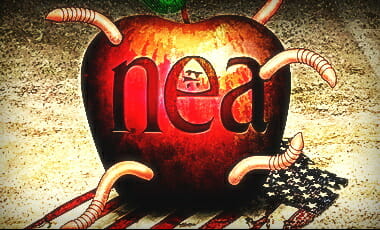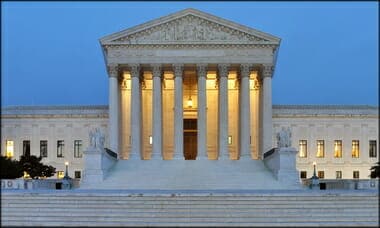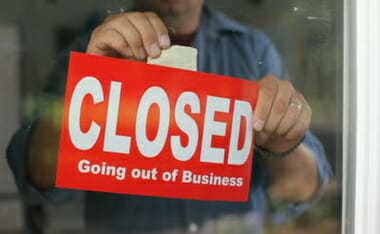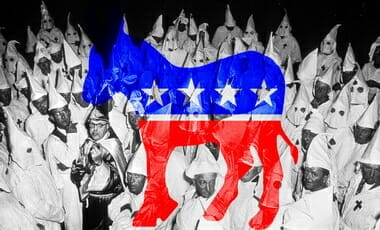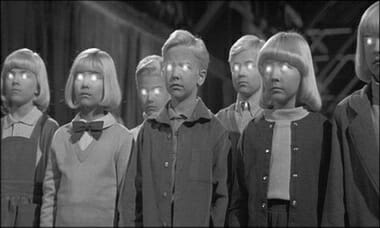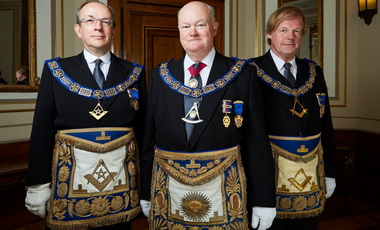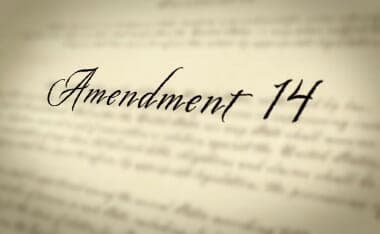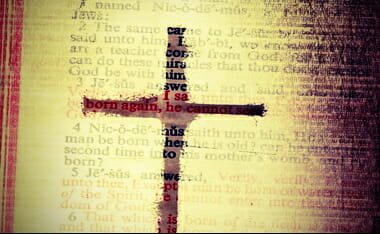(I just reedited an old [already edited] fix I uploaded to my [now nixed] Vimeo account. In this version I play with the audio more via LALAL.AI, and added subtitles via CHECKSUB.)
This original video can be found on YouTube, HERE.
(Video Description) Shannon asked me at the 2 minute mark: “Could it be possible that God was also saved, and also became a new creature, and therefore was fully capable of becoming a god?” August 29, 2019, at the BYU vs Utah game
(GOD NEVER SINNED) Multiple women that I spoke to from the anti-vax group promoted conspiracy theories. The last conversation of the night I have was, no joke, with a flat-earther who supposed we hadn’t landed on the moon. I encouraged her to read my article, “Christians, Don’t Waste Your Life on Conspiracy Theories”
- Joseph Smith said, “We have imagined and supposed that God was God from all eternity. I will refute that idea and take the veil away…. God Himself was once as we are now, and is an exalted man”” (Teachings of the Prophet Joseph Smith, p. 345-346).
- Brigham Young said “It appears ridiculous to the world, under their darkened and erroneous traditions, that God has once been a finite being” (Desert News, November 16, 1859, page 290).
- Lorenzo Snow‘s famous quip: “As man is, God once was; and as God is, man may become.”
I have pointed out the “sin” aspect of this since reading a book titled, “The Mormon Concept of God: A Philosophical Analysis (Studies in American Religion),” by Francis J. Beckwith and Stephen E. Parrish. But Aaron Shafovaloff’s description of a “regional god,” a “most high god over a region of the cosmos” is a great added description to make a point with a Mormon.
Below is a portion of my chapter on the matter
I will add one thing, if I were to update that chapter today, I would shy away from … or, rather, add to the dialectical materialism aspect of the end and include the pantheistic connections as well, as part 2 of this Stanford article notes. The main point being that the Christian/Jewish understanding of the world and nature and gods/God are wholly rejected in LDS philosophy.
INFINITELY FINITE:
MORMON MATERIALISM
I had a Saturday off and was watching my nephews as well as my boys (not watching as much as making sure serious injury did not occur as oft happens with young boys); my wife was off shopping at Sam’s Club and Wal-Mart. Just prior to her getting back my nephews were picked up (not by child protective services, by their mother) and I came out to help unload the car when my wife pulled up. As I was doing so she asked who the guys with name tags on their shirts and ties were that go door to door.
Wondering why after almost twenty years of discussing such matters and having hundreds of books on both Mormon’s and Jehovah’s Witnesses lining our walls she would be asking such a question, I responded, “Mormon elders.” She responded, “Well, they just walked around the corner of our building.” Giddy, I started gathering my thoughts just in case they came to our door. I had compiled a new “routine” to use with Mormons that I thought would be an effective dismantling of their worldview and make them hunger for the truth. Sure enough, as I was carrying in a heavier item I could see through our kitchen window two clean cut guys come to the door. I directed their attention through the screen of the opened kitchen window by telling them I would be with them in a moment. I gave the wife a glance and she gave me that “go get’em Tiger” “look” that Spiderman gets from M.J.
After inviting them in, getting settled, with some small talk and the ritual offering of something for them to drink, they asked if I had any questions for them. I said, “I do in fact have a question, and the question stems from the previous election year and the exchange between Mike Huckabee and Mitt Romney (via the media) who were both running for the Republican nomination.” They were quick to say that the church does not support any one candidate, that they are politically neutral. After their disclaimer I continued, “in an off-cuff remark to a reporter, Mike Huckabee mentioned that Mitt Romney and Mormons believe that Jesus and Lucifer are literal brothers. When Mitt Romney heard about this comment from Huckabee, he responded that this is a canard used by people against the church” (rough quote).
- “So, my question is this gentlemen, maybe you can answer it, are Lucifer and Jesus brothers?”[1]
I got a decidedly more open answer than I expected, but they fell short of getting to the point I was fishing for, which is: that Heavenly Father (whom they consider God) and one of his wives had celestial sex in order to produce children whom relate to each other as siblings, making us all at least half-brothers and sisters (as there are many wives/goddesses in the Mormon heaven), and this god and goddesses were themselves conceived in much the same way.[2]One author makes the point that due to this heavenly progeny we are all children of these beings, so “Jesus, Joseph Smith, Noah, Adam, John the Baptist…. Lucifer, who would become the Devil (a.k.a. Satan), Napoleon, George Washington, Joseph Smith, Louis Armstrong, Donny and Marie Osmond, Senator Orrin Hatch, U.S. President George W. Bush, and everyone else who has ever lived on this planet”[3] are siblings.
I retrieved off of one of my bookshelves a manual meant for preparing young Mormons for marriage in the temple on a seminary level. It is entitled, Achieving Celestial Marriage.[4] (HERE IS THE DOWNLOADABLE PDF.) Reading from this should be short and sweet; all you are doing is making sure they understand the church’s stance on the issue, thus, clearing up any misconceived ideas on their part.
“If you gentlemen will indulge me, I want to read from the church’s own understanding of this topic,” I then typically show them that this manual is indeed printed and published by the church, and then I read:
“By definition, exaltation includes the ability to procreate the family unit throughout eternity. This our Father in heaven has power to do. His marriage partner is our mother in heaven. We are their spirit children, born to them in the bonds of celestial marriage.”[5]
Continuing, I read just the headings and subheadings of the next sections:
- GOD WAS ONCE A MORTAL MAN
-
- (1-2) He Lived on an Earth like Our Own
- (1-3) He Experienced Conditions Similar to Our Own and Advanced Step by Step
- GOD IS NOW AN EXALTED MAN WITH POWERS OF ETERNAL INCREASE
-
- (1-4) Our Father in Heaven Lives in an Exalted Marriage Relationship
- (1-5) We Are Literal Children of God, Part of His Family Unit
This quick and simple reading from their own church’s seminary level publication gets us both on the same page quickly.[6] I do not argue this point with them, I merely move on with this assumption in mind, that their god at some point in the finite past did not exist in bodily form (at all actually) — was born in a heaven similar to ours, born again on the earth, and was exalted into the position he is in now. In other words, at one point in the finite past, Heavenly Father did not exist as we know him today. It is from this premise I continue without missing a beat. “So, according to official church doctrine, Mormon theologians, and Mormon apologists, there is an infinite regress of gods being born and giving birth to other gods. So ‘Heavenly Father’ himself was given birth to in a similar fashion we were, and that father of your ‘heavenly father,’ in turn had a father as well. So in a sense there is a great grandfather god, and so on as you regress backward into time.” Again, this is not a point to argue, if they try, just point to the manual and say you are going off of official Mormon understanding of the issue, and then continue.
Make the point next then, that this differs from the historic, theistic understanding of God.[7] In the Judeo-Christian understanding of creation, even the space-time continuum was created.[8] The Mormon concept has gods being born into an already established, eternally, existing space with an already eternally existing form of matter. In other words, natural laws, moral laws, mathematical parameters and concepts, spatial components, logic, and the like, must have pre-dated Heavenly Father (the Mormon god of this world). The eye, kidney, inner ear, were not created like the Christian understands that God created them. The Christian has in mind that God created DNA and its accompanying RNA, the coccyx, brain, epidermis, the ability to pro-create, when He spoke Adam and Eve into existence. Prior to that these “items,” if I can flippantly refer to them as such, did not exist.
In Mormon theology, on the other hand, DNA pre-dated Heavenly Father, and in fact, he only passes on these as traits to his offspring as they were passed on to him by his father in a sexual act with other goddesses. These forces, the laws of biogenesis, inheritance, gravity, math, moral laws, all impose onto these gods then.[9] The God in Christianity is above these. Actually, the God of the Judeo-Christian reality authored or is the genesis of these concepts; the god in Mormonism is in a sense secondary to these forces or laws imposing upon him in some fashion.[10] Author and pastor Mike Robinson adeptly points this out when he writes:
The Latter-day Saint god lacks eternal omniscience, aseity, supremacy, sovereignty, and omnipotence…. The god of Mormonism does not need to exist for the intelligibility of human experience. He cannot supply the transcendental conditions that are needed for the laws of logic, love, and morality. Van Til contended that “the general precedes the particular” in our reality. This implies that the particular exalted man of Mormon theology cannot supply the general and universal realities that must be, for the necessary and unavoidable transcendental conditions listed above. A restricted and fixed exalted man cannot be the indispensable foundation for the unity of experience and knowledge.[11]
As we will see, even the potentiality of all of us becoming gods is connected to the primordial “sea” — if you will, of “souls” which Mormons refer to as our preexistence — that when used in connection with the birth of these spirit children allow them to be able to become gods in exaltation. This makes these gods, however, dependent on something that is either co-eternal or preexistent to their godhood being conferred on them; or, alternatively, their godhood being realized. This again makes the Mormon gods secondary and dependent on that which precedes them or is co-eternal with them.[12]
Here we will step away from the general conversational points one can make with these young Mormon missionaries and get into the knitty gritty for the readers edification, if we haven’t already done so. We will pick up the more general talking point in a bit. James Talmage, Mormon Apostle and theologian, in his very important Mormon text, Articles of Faith, says the following:
The Father and The Son: A Doctrinal Exposition by The First Presidency and The Twelve — The scriptures plainly and repeatedly affirm that God is the Creator of the earth and the heavens and all things that in them are. In the sense so expressed, the Creator is an Organizer. God created the earth as an organized sphere; but He certainly did not create, in the sense of bringing into primal existence, the ultimate elements of the materials of which the earth consists, for “the elements are eternal” (D. & C. 93:33)[13]
What are these infinite properties that pre-date and in some sense coexist eternally in some form with these gods from which they derive their “eternality” from? Richard Abanes points out some of these ideas in his exhaustive history of the Mormon Church:
…there is a “limitless” amount of cosmic spirit matter known as “intelligence,” out of which Elohim and Heavenly Mother made countless spirit babies via celestial sex. Their ethereal unions somehow siphoned off portions of that great ocean of cosmic “intelligence” and clothed each of these portions with a spirit body. The resulting offspring not only bore their image, but had resident within them the potential for godhood, an attribute of Heavenly Father and Mother…. Countless souls, say LDS leaders, have already attained godhood. Orson Pratt theorized: “If we should take a million of worlds like this and number their particles, we should find that there are more Gods than there are particles of matter in those worlds.”i Brigham Young, much less willing to calculate the number of gods, admitted: “How many Gods there are, I do not know. But there never was a time when there were not Gods.”ii These teachings inspired the popular Mormons couplet: “As man is, God once was; as God is, man may become.”iii[14]
To make this point further, Francis Beckwith mentions that “[s]ince [g]od the Father of Mormonism was himself organized (or spirit-birthed) by his [g]od, who himself is the offspring of yet another [g]od, and so on ad infinitum, Mormon theology therefore implies that the [g]od over this world is a contingent being[15] in an infinite lineage of gods.”[16] Concurring, Mormon theologian B. H. Roberts, a member of the First Council of Seventy, writes:
Not even God may place himself beyond the boundary of space: nor on the outside of duration. Nor is it conceivable to human thought he can create space, or annihilate matter. These are things that limit even God’s omnipotence. What then, is meant by the ascription of the attribute of Omnipotence to God? Simply that all that may or can be done by power conditioned by other eternal existences—duration, space, matter, truth, justice—God can do. But even he may not act out of harmony with the other eternal existences which condition or limit him.[17]
This is very important, because it makes the god Mormons here on this world worship contingent on other beings and parameters for his being and godhood, which has deep ethical consequences:
Hence, when a Mormon says that god is omnipresent he is asserting that god’s influence, power, and knowledge is all-pervasive, but that the focal point of God’s being (that is, his body) exists at a particular place in time and space. Because the Mormons do not believe that the universe is contingent upon God to sustain its continued existence,[18] there is no need for the Mormons to defend the classical view of omnipresence…. Since God Himself came into being as God (although he existed in some state eternally), He cannot be the source and sanction of values. He Himself obeys laws and affirmed values for whose existence he is not responsible.[19]
However, this gets beyond even the debate between Christian theology and Mormon theology, as we will soon see. Returning now to the conversation a bit. I often ask these Mormon elders, if the conversation allows, “why they think that whenever an atheist debates the issue of God in a university setting or formal debate, they never debate against the Mormon concept of god?” Of course they do not know because this question is rarely — if ever — posed to them. “I will tell you,” continuing, “It is because the atheist would be arguing against himself.” This always gets inquisitive looks and they always will ask why this is.
“Let me explain why this is,” and so I continued. I mentioned that when a person who is a lifelong atheist is born here on earth, matter (atoms, quarks, dirt, water, air, etc) doesn’t then begin to exist at the same time they are conceived; matter predated the birth of any person here on earth. The earth, the stars, and the like were here long before the not too hypothetical 45-year old atheist. Not only that, but natural laws such as the law of gravity, the laws of motion were also before this person being born and so, this person is subject to them, and in fact, lives under their sway and effects on the entire cosmos. In the same way when Heavenly Father was birthed in his heaven first by his “godley” parents he was born into an environment that worked with laws in place, even granting he was born with a “spiritual body.” (Here one may grant that in the Mormon heaven the laws may be a bit different than here on earth — hypothetically speaking — but that laws had to be in place nonetheless, even genetic parameters [DNA, amino acids, etc] were in place and that this god was subject to them, much like the “gods” of Grecian lore, even being controlled by wild emotions.) So here are two important definitions to express to these young men in some form or fashion:
Heavenly Father
Born into an environment that imposes forces on him that are both older than him and because of there (these laws) imposing forces on him (gravity, causality, entropy… whatever) while he has to live in a body that can only take up that space where he is, is, well, more powerful than he.
Atheist
Born into an environment that imposes forces on him that are both older than him and because of their (these laws) imposing on him (gravity, causality, entropy… whatever) while he has to live in a body that can only take up that space where he is, is, well, more powerful than he.
Again I point to the classical Judeo-Christian theistic thinking on matters such as these: God created even the laws of the weak and strong nuclear force and the like, matter, energy, even the space-time were brought into existence at some point in the finite past by my God. I will right about now mention that this little presentation I just gave them is what I like to call “the ‘your god is too small’ presentation.”
[1] This has become my standard opener in steering these young men down the “rabbit-trail,” so-to-speak. Often times they are not aware of the whole dynamic of their own faith, theology, and all that it entails.
[2] John Ankerberg and John Weldon, What Do Mormons Really Believe? (Eugene, OR: Harvest House, 2002), 54-59
[3] Richard Abanes, One Nation Under Gods: A History of the Mormon Church (New York, NY: Four Walls Eight Windows, 2002), 285.
[4] (Salt Lake City, UT: Church Educational System Department of Seminaries and Institutes of Religion, 1998), 129. I WILL ATTACH THIS ENTIRE PAGE IN THE APPENDIX.
[6] Usually I make this point – that Heavenly Father was a mortal man – early in the conversation, and, will revisit this idea of Heavenly Father being a man born into a world of his own by stating the argument another way. I will point out that it is possible that their god owned a gas station, worked at a grocery store as a clerk, went to college, or, even like myself, could have been convicted of crimes and done jail time before becoming “exalted.”
[7] A definition here is warranted:
Theism is the worldview that an infinite, personal God created the universe and miraculously intervenes in it from time to time…. God is both transcendent over the universe and immanent in it. The three great theistic religions are Judaism, Islam, and Christianity…. The World Was Created Ex Nihilo. [In-other-words] The world is not eternal. It came into existence by God’s fiat (decree). Its existence is totally contingent and dependent. The universe was not created from pre-existing material (ex materia), as in … materialism, nor was it made out of God’s essence (ex Deo), as in pantheism. It was brought into existence by God, but from nothing.
Norman L. Geisler, Baker Encyclopedia of Christian Apologetics (Grand Rapids: Baker Books, 1999), 722-723.
[8] Another short definition of this “before time” concept:
Time and space are creations of God that began at the Big Bang. If you go back beyond the beginning of time itself, there is simply eternity. By that, I mean eternity in the sense of timelessness. God, the eternal, is timeless in his being. God did not endure through an infinite amount of time up to the moment of creation; that would be absurd. God transcends time. He’s beyond time. Once God creates the universe, he could enter time, but that’s a different topic altogether.
Lee Strobel, The Case for a Creator: A Journalist Investigates Scientific Evidence that Points Towards God (Grand Rapids, MI: Zondervan, 2004), 104.
[9] Francis J. Beckwith, Carl Mosser, and Paul Owen, gen.ed. The New Mormon Challenge: Responding to the Latest Defenses of a Fast-Growing Movement (Grand Rapids, MI: Zondervan, 2002), 148.
[10] Ibid., 223
[11] Presuppositional Apologetics Examines Mormonism: How Van Til’s Apologetic Refutes Mormon Theology (Denver, CO: Outskirts Press, 2007), 71-72.
[12] This idea of derivative or dependent deity in polytheism is explained by professor Roy Clouser:
In many polytheistic traditions there are accounts of how the gods came into existence. This means that the divinity of such gods is clearly regarded as derived and secondary as compared to whatever is divine in the sense of having unconditional reality and accounts for their origins (from now on I will call this the status of being divine per se). Take, for example, the account of the gods of ancient Greece as found in Hesiod and Homer. In Hesiod’s account, the natural world in an undifferentiated state is what just is; it exists unconditionally and gave rise to everything else after it generated a gap between the earth and the heavens he called Chaos. Following that initial change, all other specific forms of existence were generated including the gods. According to Homer the primordial reality was Okeanos, a vast expanse of watery stuff from which arose all else including the gods. Despite their differences, then, both accounts agree that the gods are dependent on a more basic reality so the gods are themselves derivative realities. This is why no one of them — nor all of them together — could be called “creator” in the sense that God is in Genesis. Moreover, the gods are not only secondary divinities because of their optic dependency upon something else that is divine per se. They are also secondary in the noetic sense, since the beliefs about them depend upon the belief in Okeanos or Chaos. For no individual being could be believed to be a god — that is, a being with more divine power than humans possess — unless it was already believed that there is a per se divine source of all other things which confers varying degrees of power upon them. The same is true of the myths of ancient Babylonia. In them, too, the gods acquire their divine status and power derivatively.
-
- For according to them, the origin of all things was the primeval watery chaos, represented by the pair Apsu and Tiamat…. With them the cosmogenic theogony begins.
The Myth of Religious Neutrality: An Essay on the Hidden Role of Religious Belief in Theories (Notre Dame, IN: Uviversity of Notre Dame Press, 2005), 17-18 (emphasis added).
[13] James E. Talmage, A Study of the Articles of Faith (Salt Lake City, UT: The Church of Jesus Christ of Latter-day Saints, 1959) 465-466. (Emphasis added.)
[14] Richard Abanes, One Nation Under Gods, 285, 286-287.
i Orson Pratt, February 18, 1855, Journal of Discourses (Liverpool, F.D. Richards, 1855; lithographed reprint of original edition, 1966), vol. 2, 345. In The Seer, Pratt wrote: “We were begotten by our Father in Heaven; the person of our Father in Heaven was begotten on a previous heavenly world by His Father; and again He was begotten by a still more ancient Father, and so on, from generation to generation, from one heavenly world to another still more ancient, until our minds are wearied and lost in the multiplicity of generations and successive worlds, and as a last resort, we wonder in our minds, how far back the genealogy extends, and how the first world was formed, and the first Father was begotten” (Orson Pratt, “The Pre-Existence of Man,” The Seer, September 1853, vol. 1, no. 9, 132; cf. Orson Pratt, “The Pre-Existence of Man,” The Seer, February, 1853, vol. I, no. 2, 23-24).
ii Brigham Young, October 8, 1859, Journal of Discourses (Liverpool: Amass Lyman, 1860; lithographed reprint of original edition, 1966), vol. 7, 333.
iii Lorenzo Snow, MS, vol. 54, 404. Quoted in Hunter, 105-106.
These footnotes for the quotes within the quote are taken from One Nation Under Gods, 577.
[15] Concept of contingent being:
Contingent beings have their explanation or sufficient reason in something other than themselves. A contingent being is anything that depends on something else for its existence.
Ronald H. Nash, Faith & Reason: Searching for a Rational Faith (Grand Rapids, MI: Zondervan, 1988), 127.
[16] The New Mormon Challenge, 224.
[17] B.H. Roberts, Seventy’s Course in Theology: Third and Fourth Year (Salt Lake City, UT: Caxton Press, 1910), 4:70; quoted in The New Mormon Challenge, 225:
[B.H. Roberts] added that “even [God] may not act out of harmony with the other external existences [such as duration, space, matter, truth, justice] which condition or limit him. “ Mormon theologian John Widtsoe maintains that belief in creation out of nothing does nothing but cause confusion: “Much inconsistency of thought has come from the notion that things may be derived from an immaterial state, that is, from nothingness.” In addition to this assertion, Widtsoe asserts that God cannot create matter [out of nothing] nor can he destroy it: “God, possessing the supreme intelligence of the universe, can cause energy in accomplishing his ends, but create it, or destroy it, he cannot.” The sum of matter and energy, whatever their form, always remains the same.
The New Mormon Challenge, 104.
[18] The Bible has a different view on this ,matter, let’s read from Colossians 1:16-17, first from the NASB, then from the Message Bible:
For by Him all things were created, both in the heavens and on earth, visible and invisible, whether thrones or dominions or rulers or authorities—all things have been created through Him and for Him. He is before all things, and in Him all things hold together.
New American Standard Bible: 1995 Update (LaHabra, CA: The Lockman Foundation, 1995)
We look at this Son and see the God who cannot be seen. We look at this Son and see God’s original purpose in everything created. For everything, absolutely everything, above and below, visible and invisible, rank after rank after rank of angels—everything got started in him and finds its purpose in him. He was there before any of it came into existence and holds it all together right up to this moment. And when it comes to the church, he organizes and holds it together, like a head does a body.
Eugene H Peterson, The Message: The Bible in Contemporary Language (Colorado Springs, CO: NavPress, 2002).
[19] Francis J. Beckwith and Stephen E. Parrish, The Mormon Concept of God: A Philosophical Analysis (Lewiston, NY: Edwin Mellen Press, 1991), 43, 44. (Emphasis added.)

